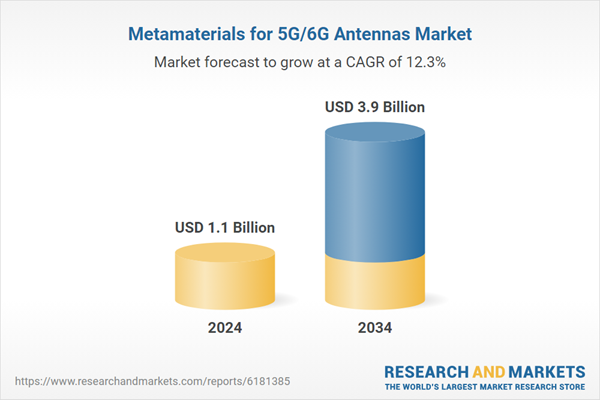Growth is driven by increasing demand for compact, high-performance wireless systems, where next-generation antennas require enhanced bandwidth, miniaturization, and low-latency signal transmission. Metamaterials engineered to display electromagnetic behaviors not found in nature enable these capabilities by improving signal propagation and directing electromagnetic waves more efficiently. Supportive policy frameworks around digital infrastructure development, such as those focused on smart cities and IoT expansion, further accelerate demand for these advanced materials. Countries with strong 5G rollout plans and high-tech investments, particularly in Asia and North America, are at the forefront of adopting metamaterial-enabled technologies. North America is experiencing rapid expansion, supported by a robust R&D ecosystem, government funding, and rising integration of smart, energy-efficient antennas into telecom, automotive, aerospace, and medical sectors. The push toward 6G and terahertz communication is also encouraging the adoption of novel materials that can deliver high-frequency performance in dense urban environments while aligning with evolving regulatory standards.
The antenna arrays and panels segment generated USD 403.1 million in 2024, leading the market due to their precise beamforming abilities, signal directivity, and bandwidth efficiency. Their critical role in optimizing signal quality, especially in dense urban areas, positions them as the backbone of modern wireless networks. Integration with metamaterials enhances these features while supporting aesthetic and space-related requirements in compact infrastructures.
The frequency selective surfaces segment held a 32.1% share in 2024 and continues to dominate the technology category. These structures filter specific frequency bands, improving signal integrity and minimizing interference. Their role in achieving high spectral efficiency makes them indispensable in 5G and future 6G antenna designs. Additionally, their adaptability to existing telecom setups supports scalable deployment across expanding digital landscapes.
North America Metamaterials for 5G/6G Antennas Market is projected to grow at a CAGR of 12.3% through 2034. This region is emphasizing sustainable and energy-conscious communication technologies. Metamaterial advancements are focusing on lightweight, high-performance composites designed for seamless integration into next-gen infrastructure, especially in highly populated metropolitan areas. Regulatory pressure for greener technologies also encourages innovation in this space.
Key players in the Global Metamaterials for 5G/6G Antennas Market include Meta Material Inc., Pivotal Commware, Lockheed Martin Corporation, ZTE Corporation, Echodyne, Kymeta Corporation, Fractal Antenna Systems Inc., and TeraView Limited. Companies competing in the metamaterials for 5G/6G antennas market are pursuing innovation-centric strategies to stay ahead. Strategic collaborations with telecom providers, research institutions, and government agencies allow faster prototyping and access to specialized high-frequency materials. Many are investing in in-house R&D to advance design algorithms and improve metamaterial performance under real-world conditions.
Comprehensive Market Analysis and Forecast
- Industry trends, key growth drivers, challenges, future opportunities, and regulatory landscape
- Competitive landscape with Porter’s Five Forces and PESTEL analysis
- Market size, segmentation, and regional forecasts
- In-depth company profiles, business strategies, financial insights, and SWOT analysis
This product will be delivered within 2-4 business days.
Table of Contents
Companies Mentioned
The companies profiled in this Metamaterials for 5G/6G Antennas market report include:- Echodyne
- Fractal Antenna Systems Inc
- Kymeta Corporation
- Lockheed Martin Corporation
- Meta Material Inc
- Pivotal Commware
- TeraView Limited
- ZTE Corporation
Table Information
| Report Attribute | Details |
|---|---|
| No. of Pages | 210 |
| Published | October 2025 |
| Forecast Period | 2024 - 2034 |
| Estimated Market Value ( USD | $ 1.1 Billion |
| Forecasted Market Value ( USD | $ 3.9 Billion |
| Compound Annual Growth Rate | 12.3% |
| Regions Covered | Global |
| No. of Companies Mentioned | 9 |









